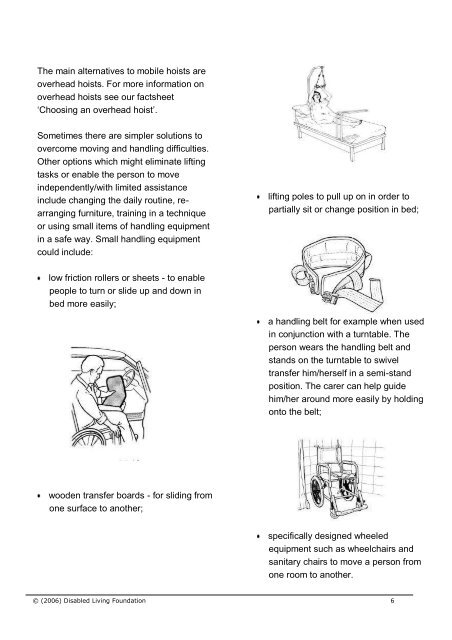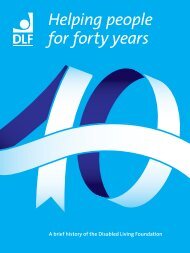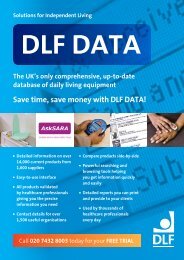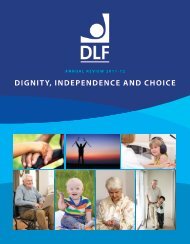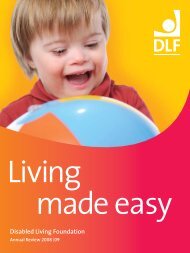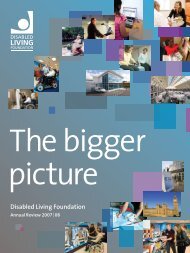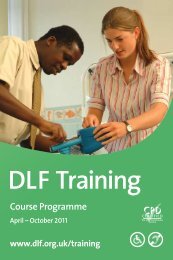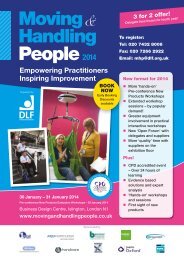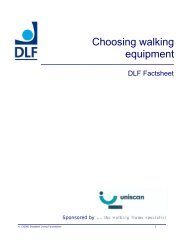DLF Factsheet 'Choosing a Mobile Hoist' - Disabled Living Foundation
DLF Factsheet 'Choosing a Mobile Hoist' - Disabled Living Foundation
DLF Factsheet 'Choosing a Mobile Hoist' - Disabled Living Foundation
Create successful ePaper yourself
Turn your PDF publications into a flip-book with our unique Google optimized e-Paper software.
The main alternatives to mobile hoists are<br />
overhead hoists. For more information on<br />
overhead hoists see our factsheet<br />
‘Choosing an overhead hoist’.<br />
Sometimes there are simpler solutions to<br />
overcome moving and handling difficulties.<br />
Other options which might eliminate lifting<br />
tasks or enable the person to move<br />
independently/with limited assistance<br />
include changing the daily routine, rearranging<br />
furniture, training in a technique<br />
or using small items of handling equipment<br />
in a safe way. Small handling equipment<br />
could include:<br />
low friction rollers or sheets - to enable<br />
people to turn or slide up and down in<br />
bed more easily;<br />
wooden transfer boards - for sliding from<br />
one surface to another;<br />
lifting poles to pull up on in order to<br />
partially sit or change position in bed;<br />
a handling belt for example when used<br />
in conjunction with a turntable. The<br />
person wears the handling belt and<br />
stands on the turntable to swivel<br />
transfer him/herself in a semi-stand<br />
position. The carer can help guide<br />
him/her around more easily by holding<br />
onto the belt;<br />
specifically designed wheeled<br />
equipment such as wheelchairs and<br />
sanitary chairs to move a person from<br />
one room to another.<br />
© (2006) <strong>Disabled</strong> <strong>Living</strong> <strong>Foundation</strong> 6


